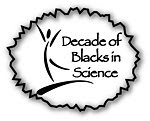I'm going to do something a little extra today - present a research paper to you. It's about a common urban species - Honey Bees; and the topic is related to what I study - individual differences in behavior.
by: Sarah D. Kocher, Julien F. Ayroles, Eric A. Stone, Christina M. Grozinger
Study Summary
The researchers examined a behavior in honey bees known to regulate the social behavior of the hive – the retinue response. Retinue response is the amount of time and attention worker bees pay to the queen because of a special pheromone or chemical she sends out. This chemical keeps the hive socially connected. In any group of animals, individuals will behave differently. Some worker responses have a very high retinue response – spending a lot time very close to the queen and picking up the pheromone; and some others have a very low retinue response. The authors set out to measure the amount of individual differences in behavioral and physiological (internal body function) responses to queen pheromones.
Normally, the Queen pheromone is spread over the hive by daughter worker bees. However, there are some worker bees who either don’t prefer the pheromone or avoid the queen altogether. When that happens, physiological changes occur and these daughters have somewhat developed ovaries. These stand-offish daughters have been known to lay their own eggs (usually a no-no in polite Hymenopteran society) which can develop into reproductively capable sons. That doesn’t often happen because other sisters who find nephews (and not brothers) in the bee nursery have been known to discard or destroy the eggs or pupae.
Worker honey bees from two different sub-species (or races): Carniolan and Italian bees were observed. These are very old and well-known races of bees that are morphologically distinct (different physical appearance and shape). The researchers studied 5 colonies of the Carniolan bees and 4 colonies of the Italian bees.
The researchers examined a behavior in honey bees known to regulate the social behavior of the hive – the retinue response. Retinue response is the amount of time and attention worker bees pay to the queen because of a special pheromone or chemical she sends out. This chemical keeps the hive socially connected. In any group of animals, individuals will behave differently. Some worker responses have a very high retinue response – spending a lot time very close to the queen and picking up the pheromone; and some others have a very low retinue response. The authors set out to measure the amount of individual differences in behavioral and physiological (internal body function) responses to queen pheromones.
Normally, the Queen pheromone is spread over the hive by daughter worker bees. However, there are some worker bees who either don’t prefer the pheromone or avoid the queen altogether. When that happens, physiological changes occur and these daughters have somewhat developed ovaries. These stand-offish daughters have been known to lay their own eggs (usually a no-no in polite Hymenopteran society) which can develop into reproductively capable sons. That doesn’t often happen because other sisters who find nephews (and not brothers) in the bee nursery have been known to discard or destroy the eggs or pupae.
Worker honey bees from two different sub-species (or races): Carniolan and Italian bees were observed. These are very old and well-known races of bees that are morphologically distinct (different physical appearance and shape). The researchers studied 5 colonies of the Carniolan bees and 4 colonies of the Italian bees.
Each colony in this study was comprised of full sister worker bees. In bees (and in other Hymenoptera like wasps, hornets, and ants) full sisters are related to each other by 75%. Unlike people (and other mammals), full bee sisters are more related to each other than they are to their mom. I got half (50%) of my chromosomes from my mom, and half (50%)from my dad. Any of my full siblings get the same percentage, but not necessary the exact same chromosomes, so we’re related to each other by 50%, too. In bees, mothers give their daughters half of their chromosomes (50%), but dads give daughters everything – the whole set of chromosomes (100%). So it’s a family affair in the bee hive. With that being said, the authors set out to know how can full sisters that are so highly related still behave so very differently from each other?
Drops of diluted queen pheromone were placed on a slide and introduced to smaller groups of bees (from each colony). The researchers counted the number of worker bees that came into contact with the pheromone and the number of times each bee visited the slide over a period of time (25 minutes). They did this for 5 consecutive days, doing it in the spring and again in the fall.
What did they find?
Drops of diluted queen pheromone were placed on a slide and introduced to smaller groups of bees (from each colony). The researchers counted the number of worker bees that came into contact with the pheromone and the number of times each bee visited the slide over a period of time (25 minutes). They did this for 5 consecutive days, doing it in the spring and again in the fall.
What did they find?
Well, first not all worker bees behaved the same. There was considerable variation, some visited the pheromone more than others, but there were no big differences between Carniolan and Italian bees. However, they did find worker bees that visited the pheromone less were the ones who had better developed ovaries than sisters who visited the pheromone more. Not only were there behavioral differences among sisters, there were also internal changes that corresponded to this behavior. The researchers confirmed that retinue response to Queen hormone is important for suppressing worker be ovary development which keeps them from having their own baby bees sons.
So what could be driving these differences? Like I mentioned before, all of study bees were full sisters to each other so it can’t be the genes, right? Well, not quite. The researchers did identify the genes they believe responsible for retinue response. What they found was that although the sisters may have been similar to each other in the types of genes they had, gene expression differed from bee to bee. It’s one thing to have the same gene as another person. It’s something else to have that gene actually work and perform in your body. The same gene in your body may do more work (or less work) than that same gene does in my body. This is called individual variation in genetic expression and that is what seems to be at play with the bees. Retinue response is correlated to ovarian development which is correlated to gene expression.
So what could be driving these differences? Like I mentioned before, all of study bees were full sisters to each other so it can’t be the genes, right? Well, not quite. The researchers did identify the genes they believe responsible for retinue response. What they found was that although the sisters may have been similar to each other in the types of genes they had, gene expression differed from bee to bee. It’s one thing to have the same gene as another person. It’s something else to have that gene actually work and perform in your body. The same gene in your body may do more work (or less work) than that same gene does in my body. This is called individual variation in genetic expression and that is what seems to be at play with the bees. Retinue response is correlated to ovarian development which is correlated to gene expression.
They were the same, but different – inside and out.
Why does any of this matter?
In a natural colony of honey bees, the hive must survive. Though most of the time the Queen is laying eggs to make more worker bees, change does come. Queens don’t live forever. When the old queen dies, worker bees go into fast action to raise a sister queen bee – who will have the next generation of bee babies. Who does this important work? Worker bees with higher retinue response. They raise the next and future queen. They make sure any eggs already laid get the necessary nutrition (royal jelly) to put them on the fast track to the throne. (Worker bees and queen bees are genetically similar, the time to develop and type of food fed as a pupae is what makes them physically, physiologically, and behaviorally different from each other).
On the hand, worker bees with lower retinue response, those with better developed ovaries, are able to lay eggs and produce sons. Now, raising nephews is not as big of a deal since they will soon leave the hive and go and mate with other queens when he becomes mature. In this way, bees are able to reproduce and spread the love or genes around.
Full Citation: Kocher SD, Ayroles JF, Stone EA, & Grozinger CM (2010). Individual variation in pheromone response correlates with reproductive traits and brain gene expression in worker honey bees. PloS one, 5 (2) PMID: 20161742
Related articles: Urban Wildlife Watch - The Buzz about Bees
My comments to this article: PLoSone.org























No comments:
Post a Comment